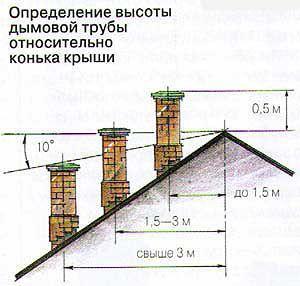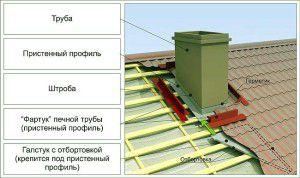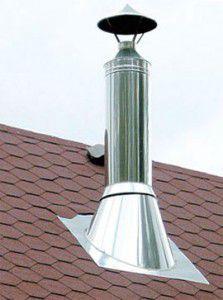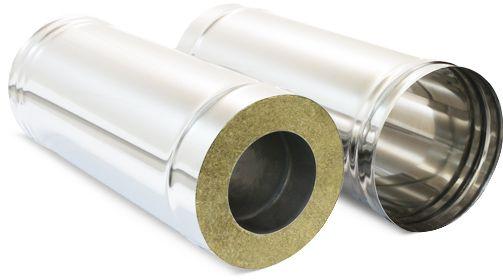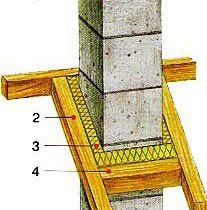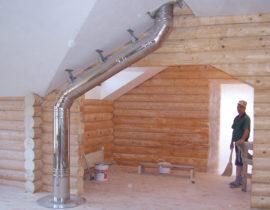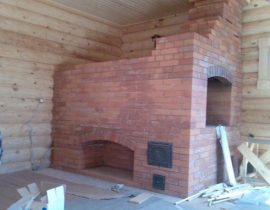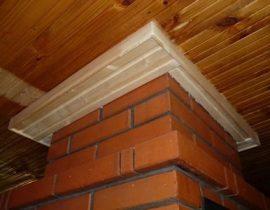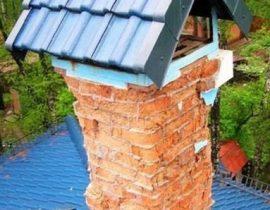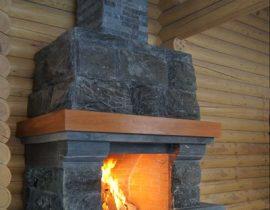Of course, a modern house with a stove is an anachronism. A zealous owner puts himself a complex economical heating system.
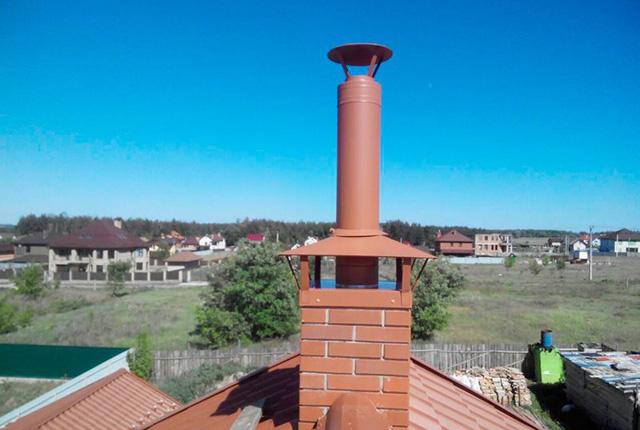
types of chimney pipes
However, what could be better than sitting in front of a fireplace on a cold evening or taking a steam bath in a Russian bath? But both a fireplace and a good stove in a Russian bath cannot do without chimneys and chimneys. This equipment will also be relevant in the construction of stationary barbecues and barbecues. The device of chimneys and chimneys is quite simple, but has some nuances.
Types of chimneys
Chimneys and chimneys can be divided into several large groups depending on the material of their manufacture. So they can be made using brickwork, from metal pipes of various types, as well as from multilayer materials.
In addition, stove chimneys may differ in the way they are installed:
- Wall chimneys are mounted directly in the thickness of the walls of the building, external or internal. At the same time, stoves and fireplaces can also be mounted directly in the walls of buildings.
- Suspended chimneys are mounted on the outer walls of buildings.
- There are also indigenous chimneys.Such structures are mounted separately, next to the furnace.
SNiP requirements for chimneys and chimneys
Certain requirements are imposed on chimneys and chimneys under construction by existing SNiPs:
- They must effectively remove combustion products.
- They must have sufficient height above the roof ridge.
- Their internal section should be sufficient for complete removal of smoke.
- Pipes must be resistant to high temperatures.
- They must be strong, the upper part of the chimney must withstand gusts of wind
Let's start with the height of the chimney. Sufficient height of the chimney provides good draft and effectively removes combustion products, preventing the room from smoking and maintaining draft. However, excessive pipe height can lead to condensation and reduced draft.
The diameter of the chimney or its internal section is calculated based on the dimensions of the furnace. It increases along with the volume of the furnace space, in proportion to it. An insufficient section of the chimney leads to smoke, but an excessive diameter will, on the contrary, lead to a decrease in traction.
What should the chimney be made of, what materials are prohibited to use?
The main requirement for the material for the manufacture of chimney chimneys is heat resistance. The minimum fire safety threshold for chimney material is set at 30 minutes and 1000 degrees. In continuous operation, the pipe material must withstand temperatures of 500 degrees without damage, since the temperature of the combustion products rarely drops below 300 degrees.
A margin of 200 degrees is due to the fact that soot accumulating in pipes tends to ignite spontaneously.
Strict requirements are also imposed on thermal conductivity. The temperature of the outer layer of chimney pipes should not exceed 90 degrees, and in places of interface with flammable structures - no higher than 65 degrees.
We especially note that the combustion materials have an aggressive chemical composition and the material from which the pipes of furnace chimneys are made must effectively withstand an unfavorable chemical environment. In addition, the part of the pipe that extends outside the room is exposed to climatic conditions and must not be destroyed due to temperature changes.
The traditional material for the manufacture of chimneys is refractory bricks. It almost perfectly meets all the requirements for chimney materials. However, the construction of brick chimney chimneys requires certain skills.
In addition, the brick must be individually selected for each heating device. So in furnaces, the temperature of the combustion products is usually kept at 250 degrees, but in fireplaces, under direct fire conditions, it can reach 400 degrees. Thus, the walls of a brick pipe for a fireplace are recommended to be made of fireclay bricks, laying a wall thickness of more than 15 centimeters with 5 mm seams. This significantly increases the cost of manufacturing chimney pipes for fireplaces, as well as the requirements for the strength characteristics of the foundations under the fireplace.
Asbestos cement chimneys and chimneys
Relatively cheap, but also reliable material for the manufacture of chimney pipes are asbestos-cement pipes. They can be used for the construction of chimneys in stationary barbecues, light buildings, baths. When installing such pipes, special attention should be paid to areas of interface with flammable materials, since an asbestos-cement pipe may crack during service.
Stainless steel chimneys
As a rule, furnace chimneys made of stainless steel can be used in the construction of heating systems with gas boilers. Such a pipe heats up very strongly from the passage of combustion products and therefore it must be reliably equipped. In addition, it is necessary to pay special attention to the quality of the pipe from which the chimney is made. Thin stainless metal, especially in low-quality pipes, can crack, which can easily cause a fire.
Also, the disadvantage of this model of pipes is the strong formation of condensate on their surface.
Pipes and chimneys made of multilayer composite materials
New models of pipes, also called "sandwich pipes", appeared on the market relatively recently, but have already managed to prove themselves well. Multilayer pipes are manufactured in industrial conditions, usually in the form of meter lengths; during installation, the chimneys simply need to be connected. Such a pipe is reliable in terms of strength, is highly resistant to high temperatures and to aggressive chemical environments.
Usually sandwich pipe has three layers. The inner surface is made of stainless steel, the upper surface is galvanized. An insulating material is placed between them.
Such a pipe has a small weight and is quite undemanding to installation. It does not give a big load on the furnace.As a disadvantage, one can note the high cost of such structures and a relatively low service life. However, uptime sandwich pipes depends on the specific manufacturer. During operation, such a pipe is subjected to temperature deformations, which can violate its integrity.
Multilayer pipes may have a different composition. So the inner part can be made of refractory clay, and basalt wool can be placed between it and the upper shell of lightweight concrete. Such a complete set of multilayer pipes significantly increases their service life. In addition, various decorative coatings can be glued to the outer part of such a pipe.
Modular chimneys
Modern industry offers ready-made kits for independent installation of chimney chimneys. All components are produced in industrial plants and then easily assembled on site.
How to arrange a chimney passage through the roof?
1 - chimney chimney, 2 - rafter leg, 3 - fireproof heat-insulating material, 4 - load-bearing beam
Typically, the installation of chimney chimneys is carried out during the construction of a building or structure, simultaneously with the installation of a stove or heating system.
With this approach, you can easily adjust the relative position of the rafters under the chimney and create the necessary gaps between the wooden materials and the chimney. They must leave at least 15 centimeters and are laid with fireproof material, such as basalt wool.
When building a stove or fireplace, when calculating their foundation, it is necessary to take into account the weight of the chimney pipe.
The upper part of the pipe can be equipped with a protective device that prevents, on the one hand, the scattering of sparks, and on the other hand, the ingress of rain into the pipe.
Brick chimney laying - instructional video

